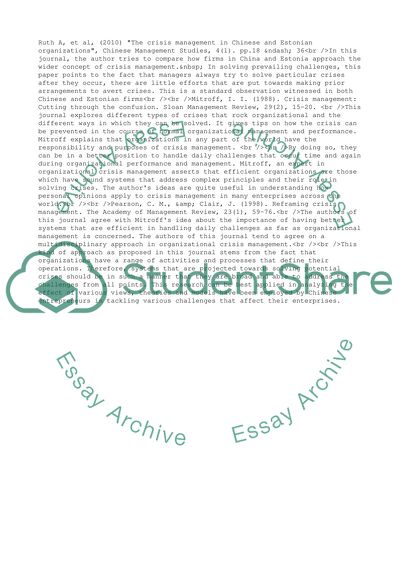Cite this document
(Crisis Management of Chinese Enterprises Annotated Bibliography Example | Topics and Well Written Essays - 2500 words, n.d.)
Crisis Management of Chinese Enterprises Annotated Bibliography Example | Topics and Well Written Essays - 2500 words. https://studentshare.org/management/1816471-the-reflection-of-individual-opinions-in-crisis-management-of-chinese-enterprises
Crisis Management of Chinese Enterprises Annotated Bibliography Example | Topics and Well Written Essays - 2500 words. https://studentshare.org/management/1816471-the-reflection-of-individual-opinions-in-crisis-management-of-chinese-enterprises
(Crisis Management of Chinese Enterprises Annotated Bibliography Example | Topics and Well Written Essays - 2500 Words)
Crisis Management of Chinese Enterprises Annotated Bibliography Example | Topics and Well Written Essays - 2500 Words. https://studentshare.org/management/1816471-the-reflection-of-individual-opinions-in-crisis-management-of-chinese-enterprises.
Crisis Management of Chinese Enterprises Annotated Bibliography Example | Topics and Well Written Essays - 2500 Words. https://studentshare.org/management/1816471-the-reflection-of-individual-opinions-in-crisis-management-of-chinese-enterprises.
“Crisis Management of Chinese Enterprises Annotated Bibliography Example | Topics and Well Written Essays - 2500 Words”. https://studentshare.org/management/1816471-the-reflection-of-individual-opinions-in-crisis-management-of-chinese-enterprises.


